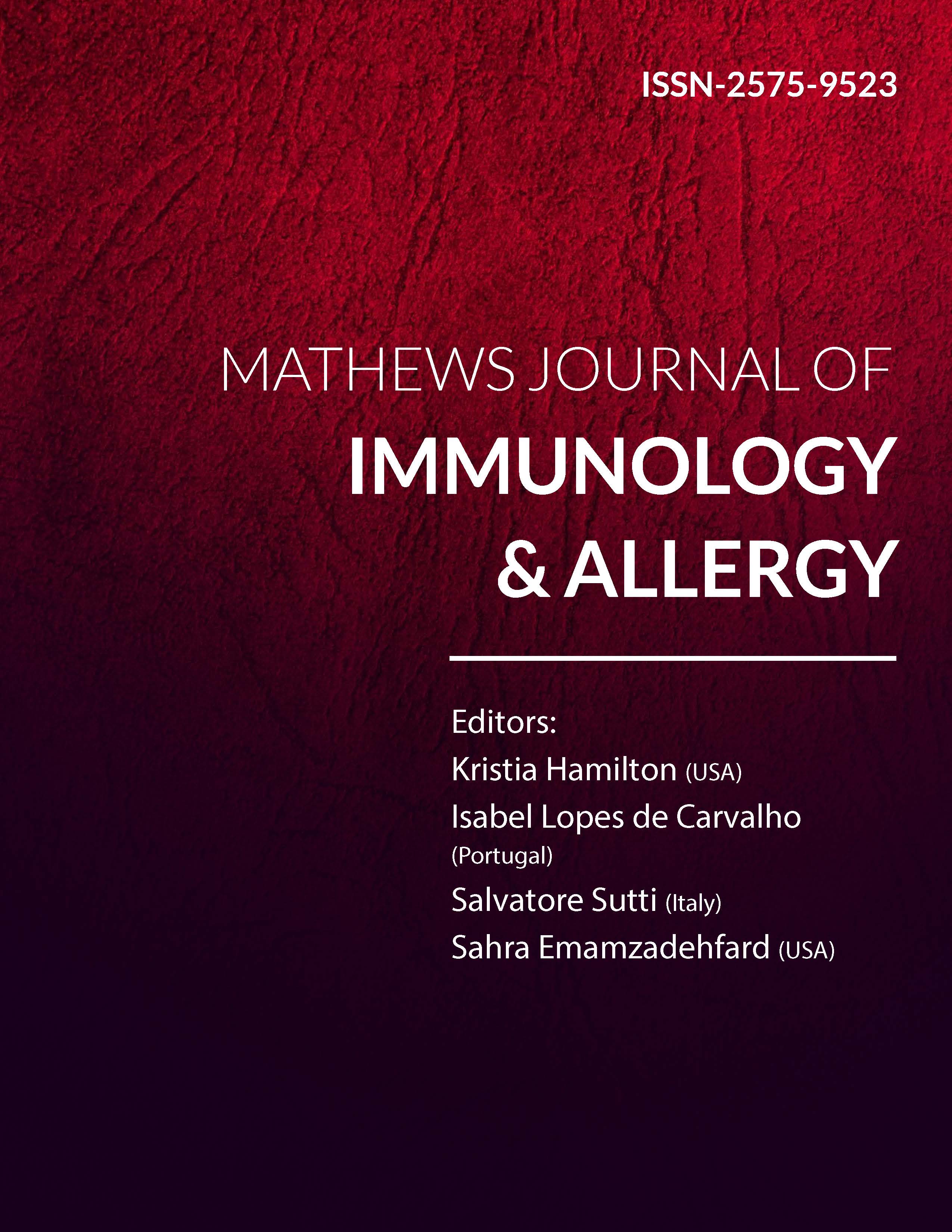
Information Links
Previous Issues Volume 6, Issue 1 - 2022
The Nanobodies and its Relations to IPA (Invertebrate Primitive Antibodies). Existence of At Least 2 Classes of IPA in Sea Star Immune System
Michel Leclerc*
Immunology of Invertebrates, Orléans University, 556 rue Isabelle Romée, 45640 SANDILLON, France
*Corresponding author: Michel Leclerc, Immunology of Invertebrates, Orléans University, 556 rue Isabelle Romée, 45640 SANDILLON, France. Tel: 0238410209, E-mail: [email protected]
Received Date: November 29, 2022
Published Date: December 07, 2022
Citation: Leclerc M. (2022). The Nanobodies and its Relations to IPA (Invertebrate Primitive Antibodies). Existence of At Least 2 Classes of IPA in Sea Star Immune System. Mathews J Immunol Allergy. 6(1):14.
Copyrights: Leclerc M. © (2022).
Keywords: Nanobodies, Invertebrate Primitive antibodies, sea star, Asterias rubens
LETTER TO EDITOR
In 1986, we have isolated [1] an antibody-like factor composed of 4 subunits of 30 KDA each: It was an anti-TNP (TNP=Trinitrophényl) antibody-like substance). Later, in 2011, by the help of Genomics, we discovered anti-HRP Kappa genes (HRP=Horse-radish peroxydase) in the genome of the sea star Asterias rubens [2] from animals immunized to HRP.
In 2014, A new gene: a sea star IGKappa gene, showing 2 IG sites, was obtained, always from the Asterias rubens genome [3]: it was called: IPA (Invertebrate Primitive Antibody).
Then, we found a recombinant protein issued from cloning sea star IGKappa gene through HeK cells [4]. The corresponding protein, in SDS -Page had a molecular weight of 14 KDA.
In conclusion, at least 2 SORTS OF IPA (Invertebrate Primitive Antibodies) at minima coexist in the sea star immune system and we think they may constitute Nanobodies we want to explore later. The first IPA (anti-TNP) has a M.W of 30KDA, the second one of 14 KDA. The second one belongs to Kappa genes (light chain of IG) the first one remains enigmatic when compared to heavy or to light chains of Vertebrate Immunoglobulins.
In the year 2013, Doctor Serge Muyldermans worked of Camelids and their sera [5], He found that: Sera of camelids contain both conventional heterotetrameric antibodies and unique functional heavy (H)-chain antibodies (HCAbs). The H chain of these homodimeric antibodies consists of one antigen-binding domain, the VHH, and two constant domains. HCAbs fail to incorporate light (L) chains owing to the deletion of the first constant domain and a reshaped surface at the VHH side, which normally associates with L chains in conventional antibodies. The genetic elements composing HCAbs have been identified, but the in vivo generation of these antibodies from their dedicated genes into antigen-specific and affinity-matured bona fide antibodies remains largely underinvestigated. However, the facile identification of antigen-specific VHHs and their beneficial biochemical and economic properties (size, affinity, specificity, stability, production cost) supported by multiple crystal structures have encouraged antibody engineering of these single-domain antibodies for use as a research tool and in biotechnology and medicine. Muyldermans initiated the Notion of Nanobodies with a weak molecular Weight as our own sea star antibodies: It is of special interest to continue exploring these new IPA (Invertebrate Primitive Antibodies) to determine their capacity in supposed anti-viral activity.
We attempt to do the same work with the sea star antibody (mainly with the anti-HRP sea star Antibody of 14 KDA). So, mainly we research collaborators to undertake such problematics, in the world.
REFERENCES
- Delmotte F, Brillouet C, Leclerc M, Luquet G, Kaderet JC. (1986). Purification of an antibody-like protein from the sea star Asterias rubens (L.). Eur J Immunol. 16(11):1325-1330.
- Leclerc M, Dupont S, Ortega-Martinez O, Hernroth B, Krezdorn N, Rotter B. (2011). Evidence of Kappa genes in the sea-star Asterias rubens (Echinoderma). Immunol Lett. 138(2):197-198.
- Vincent N, Osteras M, Otten P, Leclerc M. (2014). A new gene in A. rubens: A sea star Ig kappa gene. Meta Gene. 4(2):320-322.
- Leclerc M. (2021). Recombinant Sip Young 6 His Protein Production from the Sea Star Igkappa Gene, after Cloning. EJBIO. 2(2):85-86.
- Muyldermans S. Nanobodies: natural single-domain antibodies. (2013). Annu Rev Biochem. 82:775-797.